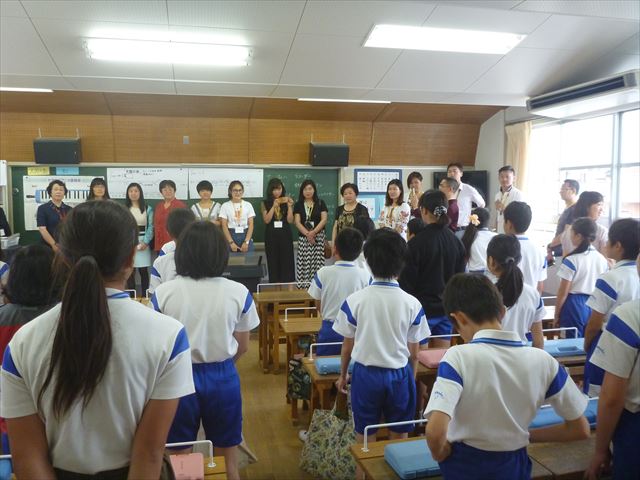Information about the Disaster and Map
- Date and Time:May 12, 2008
- Location: Around 300 km northeast of Chengdu
- Victim of the disaster: Approximately 46.24 million people
- Magnitude of earthquake: 8.1 on the Richter scale
- Number of deaths : 87,476
- Collapsed and damaged houses: 216,000 collapsed, 4.15 million damaged
View Sichuan, China in a larger map
About the project
(1) Initial survey and debris cleanup
Three days after the disaster, we dispatched our staff member Yoshitsubaki to the area to conduct a survey of about 100 towns and villages in the affected areas, including Mianyang, Mianzhu, Tshihou, and Dujiangyan, based at Sim’s Cozy Garden Hostel, a guesthouse in Chengdu. Later, we met with GuangMing Village, which has received little support from the Beichuan County of Mianyang. Together with Japanese backpackers, international students, university students, and volunteers from China, Korea, Hong Kong, and Taiwan who gathered at Sim’s, we worked in GuangMing village cleaning up debris, assisting in the construction of temporary housing, digging wells, doing farm work, and preparing housing lots for permanent housing, and by working together with villagers, we built relationships with them.


Left : Clearing debris Right : Initial survey
Above : Clearing debris
Below : Initial survey
(3) Providing study sessions on earthquake resistance and home reconstruction design
The reconstruction of permanent housing began around September 2008. The reconstruction was presented in the design of the government’s reconstruction plan, and the residents were trying to rebuild their houses in the same structure as before the earthquake. Therefore, CODE held several study sessions on earthquake resistance for residents, using videos of “shake table tests” conducted in India and Iran in the past and examples of traditional wooden buildings from the Noto Peninsula earthquake the previous year. We then proposed to rebuild the houses with traditional wooden structures. This was because the houses in this GuangMing village built with traditional wooden structures that did not use nails remained solidly intact without collapsing during the earthquake. This is also the reason why CODE chose to base itself in Guangming Village. The design was done with the help of architectural experts from Sichuan University; four families have rebuilt their homes in this traditional wooden structure. The reconstructed houses were built by the entire village. Elders presided over a ceremony using chickens, men connected the pillars and beams, women and the elderly used ropes to raise the pillars, young people prepared firecrackers and paper lanterns to ward off evil, and a big feast was held for everyone after the building was completed. This was the first time in 35 years that a wooden house had been constructed in this village.
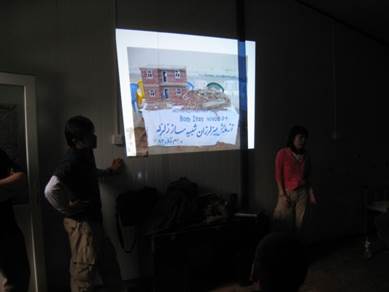


Left : Study session on earthquake resistance
Middle : Design of wooden houses
Right : Reconstruction of wooden buildings by residents
Above : Study session on earthquake resistance
Middle : Design of wooden houses
Below : Reconstruction of wooden buildings by residents
(3) Holding festivals
In GuangMing Village, a festival to celebrate the elderly called “Old Folks Festival” was held once a year in the ninth month of the lunar calendar. Members of the village’s old-age activity club would perform songs, dances, and plays. This club in GuangMing Village was well known in this area. However, it was not held in 2008 due to the earthquake.In March 2009, CODE and Mr. Li Guanghong, an overseas Chinese resident in Japan, held a “China-Japan Friendship Party” in Guangming Village, where both Chinese and Japanese song and dance performances were presented. Many spectators gathered not only from within the village but also from surrounding villages, bringing the village back to life. Since then, we have held a festival together every September (Old Folks’ Day).
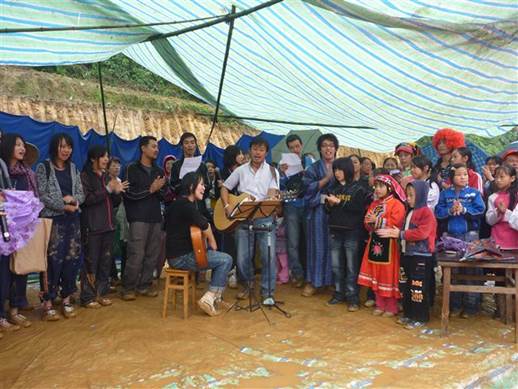
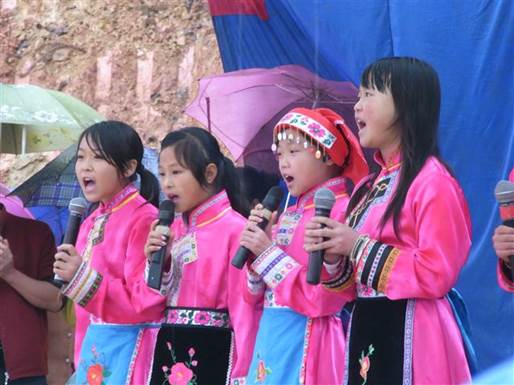
Left : Participating in the village festival Right : Children singing
Above : Participating in the village festival Below : Children singing
(4) Construction of the Geriatric Activity Center and afterwards
As the main project, we constructed the “Geriatric Activity Center” in Guangming Village. The center was designed by the Sichuan Province Ancient Architecture Design Institute, a well-known architectural firm in Sichuan, and was constructed using traditional wooden construction methods unique to Chuanxi (western Sichuan Province). In GuangMing Village, many of the young people have left to work, and the center was completed in 2011 as a gathering place for the elderly, women, and children who remain in the village, a place to practice the village’s distinctive performing arts, a shelter in case of emergency, and a model house for earthquake resistance.
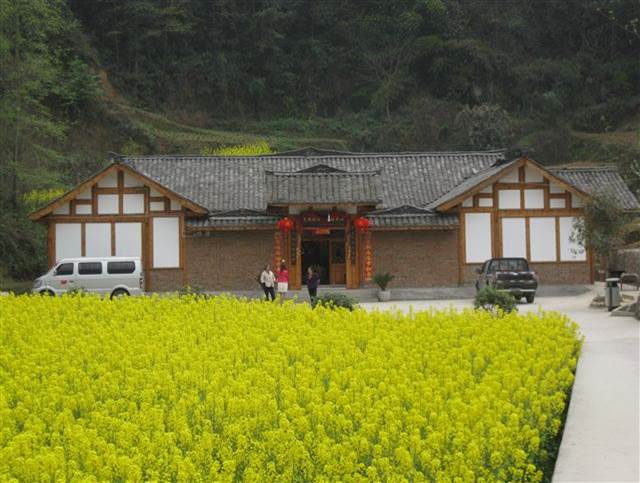
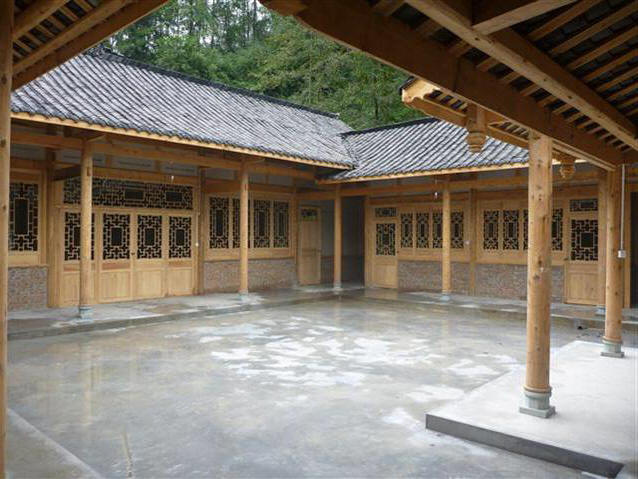
Left : Geriatric Activity Center Right : Inside the Center
Above : Geriatric Activity Center
Below : Inside the Center
The management of the center was then entrusted to the village committee (village office) of Guangming Village, and after discussions with the villagers, it was decided to utilize the center as a farmer’s paradise (agritourism). Agritourism, which is popular throughout China, is a way for city people to spend their holidays in tranquil farming villages, taste local cuisine, drink tea, and enjoy entertainment such as mahjong and playing cards.The villagers have put their own money together to build a kitchen extension at the center and start a farmer’s restaurant. The village committee also utilized the surrounding land to turn the pond into a fishing pond, cooking fish caught there and serving customers local dishes made from lotus root grown in the pond.
Although management is not yet on track, we will keep a close eye on the center’s progress as we monitor the tourism development currently underway by the government in the village.
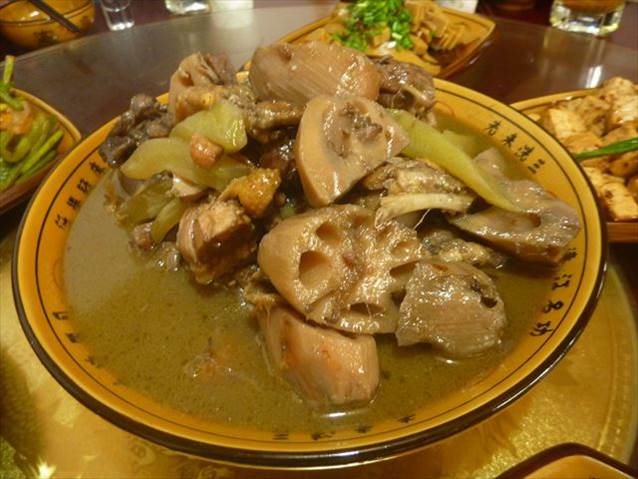

Left : Cuisine at Noukeiraku Right : Noukeiraku (Fishing po
Above : Cuisine at Noukeiraku
Below : Noukeiraku (Fishing pond)
(5) Japan-China NGO and Volunteer Training Exchange Program
This project has been conducted annually since 2015, with the cooperation of Mr. Guoyuan Zhang and others from the local “NGO Disaster Preparedness Center” in cooperation with CODE. The project has the following two objectives.
(1) To build a system of private-sector cooperation and collaboration in relief activities against future natural disasters in Japan and China, two disaster-prone countries.
(2) Through this training program, discover young people who will lead the next generation of NGO activities, meet every person in disaster-stricken areas, remove various misunderstandings and prejudices between the two countries, and support and learn from each other through volunteer work and other disaster relief activities, aiming to create a civil society where people support and learn from each other.
The 1st Japan-China NGO and Volunteer Training Exchange Program
Six Japanese university students visited disaster-stricken areas in Sichuan Province, where they attended lectures by local NGOs, toured disaster-stricken areas, and interacted with CODE-supported villagers in Guangming Village.
Date and time: March 23rd to 29th, 2015 (7 days)
Visiting places: Sichuan earthquake victims (Yingxiu town, Dujiangyan, Beichuan Earthquake Remnants, Guangming Village, Sichuan University Rehabilitation Management School, etc.)
Participant: Megumi Kosaka (3rd year, Kobe City University of Foreign Studies)
Kazuma Kitagawa (senior, Kobe University)
Yuki Onishi (1st year, Kobe University)
Yuki Naruyasu (Kwansei Gakuin University, 3rd year)
Shinichi Nakayama (Bukkyo University)
Tomohiko Ueno (Ritsumeikan University, CODE staff)
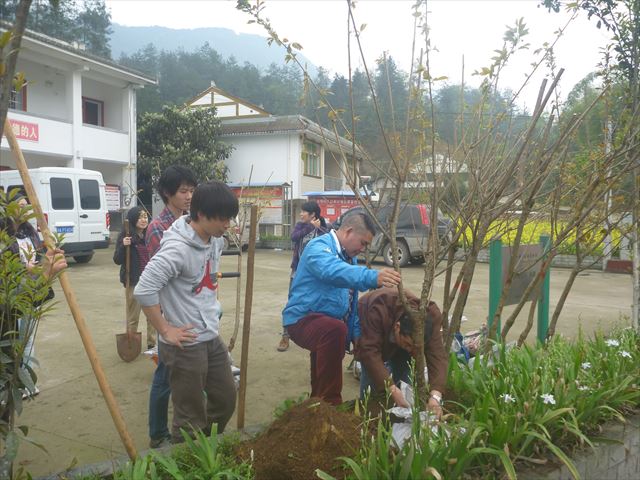
Photo: Planting cherry trees with villagers
The 2nd Japan-China NGO and Volunteer Training Exchange Program
Three NGO staff members from China were invited to visit and inspect the disaster-stricken areas of Kobe and Chuetsu, and were given lectures by Japanese experts on reconstruction and disaster prevention. Three Japanese students also accompanied them to Chuetsu.
Date: June 12-21, 2015 (10 days)
Visiting places: Kobe City, Hyogo Prefecture; Chuetsu Region, Niigata Prefecture (Nagaoka City, former Kawaguchi Town, etc.); Kanazawa City, Ishikawa Prefecture
Participants: Zhang Guoyuan (NGO Disaster Preparedness Center)
Gao Keiji (Sichuan Shouming Public Interest Development Research Center)
Luo Dan (Chengdu Neyobo Environmental and Cultural Exchange Center)
Yuki Naruyasu (Kwansei Gakuin University, 4th year)
Ryuta Miyazu (sophomore, Kobe University)
Yui Yoshizaki (sophomore, Kobe University)
Lecturer: Reiko Yamazoe (Executive Director, Coop Kobe)
Masateru Murosaki (CODE Vice President)
Masakiyo Murai (CODE Board Member)
Kimihide Atsumi (Professor, Osaka University)
Fumihiko Inagaki (Director, Reconstruction Design Center, Chuetsu Organization for Disaster Prevention and Safety Promotion)
Takumi Abe (Chief Coordinator, Reconstruction Design Center, Chuetsu Organization for Disaster Prevention and Safety Promotion)
Chief Coordinator)
Takumi Miyamoto (Lecturer, University of Hyogo)
Junichi Tanaka (Associate Professor, Hokuriku Gakuin University)
Yeon-Yeon Lee (Professor, Komazawa University)
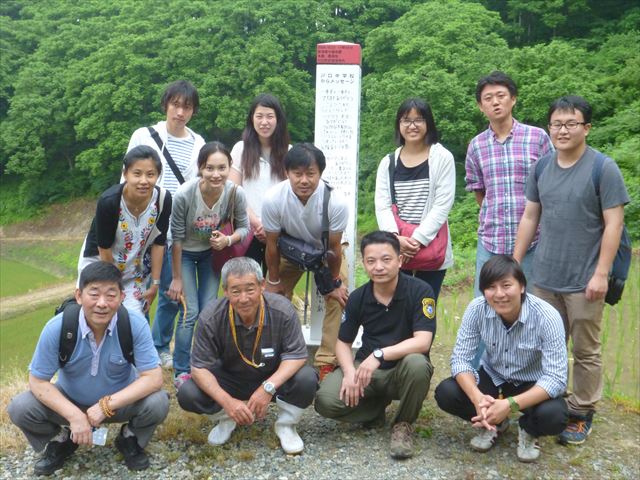
Photo: People in Chuetsu
The 3rd Japan-China NGO and Volunteer Training Exchange Program
Six young people, including Japanese university students, visited the disaster-affected areas in Sichuan Province to inspect the affected areas, visit ethnic minority villages, interact with CODE-supported Guangming villagers, and exchange disaster prevention education (safety education) with local NGOs.
Date: August 31-September 7, 2016 (8 days)
Visiting Places : Sichuan Earthquake affected areas (Eixiu Town, Wenchuan County Town, Taoping Chan Village, Beichuan Earthquake Remnants, Guangming Village, social entrepreneurship “Wall and Tiger Manpu”, etc.)
Participants: Maria Imanaka (senior, Kobe Gakuin University)
Ryo Fukuda (junior, Kobe University)
Yasutoshi Yonekawa (4th year graduate student, Doshisha University)
Yuki Naruyasu (Kwansei Gakuin University Volunteer Activity Support Center staff)
Kurumi Kishimoto (Disaster Reduction and Human Renovation Institution)
Tomohiko Ueno (CODE staff)
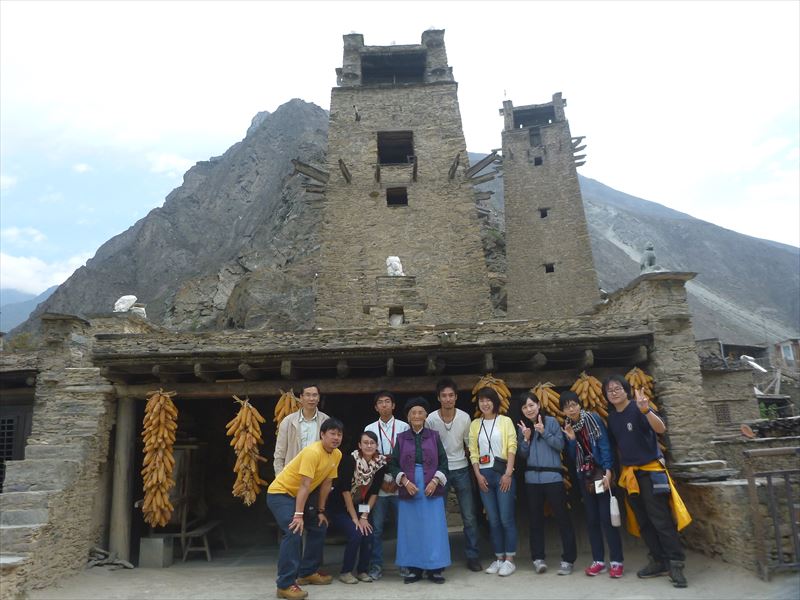
Photo: At a Chan village
The 4th Japan-China NGO and Volunteer Training Exchange Program
In addition to the visits to disaster-affected areas and exchanges with disaster victims that we have conducted in the past, we also exchanged disaster prevention education at a disaster prevention education site conducted by a local NGO (an elementary school in Ya’an), visited the Sichuan Disaster Prevention and Mitigation Education Center, and held a roundtable discussion to exchange opinions.
Date: March 12 – 19, 2018 (9 days)
Visiting places: Disaster-stricken areas in Sichuan Province, China (Xingxian Elementary School in Ya’an, Sichuan Disaster Prevention and Mitigation Education Center, Eixiu Town, Wenchuan County Town, Taoping Chan Village, Beichuan Earthquake Remains, Guangming Village, etc.)
Participants: Midori Imura (1st year, Kobe University)
Kana Orihara (Kwansei Gakuin University, 1st year)
Nanami Shimizu (sophomore, Kobe Women’s University)
Yuki Takahashi (Ehime University sophomore, CODE intern)
Yuki Naruyasu (Kwansei Gakuin University, Volunteer Activity Support Center staff)
Kurumi Kishimoto (Disaster Reduction and Human Renovation Institution)
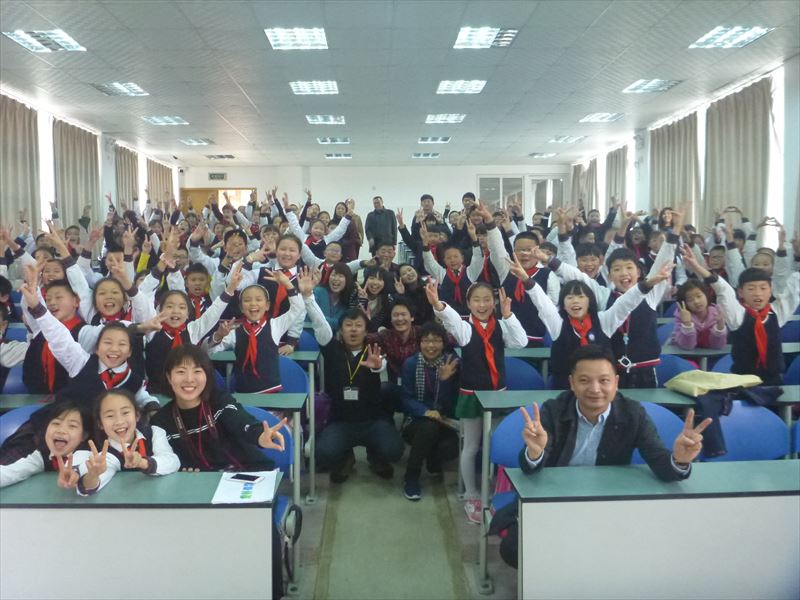
Photo: Disaster education at elementary school
The 5th Japan-China NGO and Volunteer Training Exchange Program
For the fifth session, high school students participated in this project for the first time. As in previous years, we visited the disaster-affected areas and interacted with villagers in GuangMing Village, which CODE supports. This time, with the cooperation of Mr. Sun Yingying of Sichuan University (a graduate of the Yamori Seminar at the Disaster Prevention Research Institute of Kyoto University), we were able to provide 150 students in a class at Sichuan University with a report on disaster relief in Japan and disaster education by young Japanese students. The workshop was conducted by Japanese young people.
Date: March 18-24, 2019 (7 days)
Destination: Disaster-stricken areas in Sichuan, China (Beichuan County Earthquake Remains, Chan Tourism Village, Sichuan University, Guangming Village, Sichuan Disaster Prevention and Mitigation Education Center, Taoping Chan Village)
Participants: Ayaka Yanase (junior at Yakushima Ozora High School)
Yu Yamauchi (junior, Shinko Tachibana High School)
Hana Moriguchi (sophomore, Kobe Ryukoku High School)
Karin Nishioka (sophomore, Kwansei Gakuin University)
Rio Harada (sophomore, Mukogawa Women’s University)
Yuki Naruyasu (Kwansei Gakuin University Volunteer Activity Support Center staff)
Wongru Zeng (1st year master’s student at Osaka University)
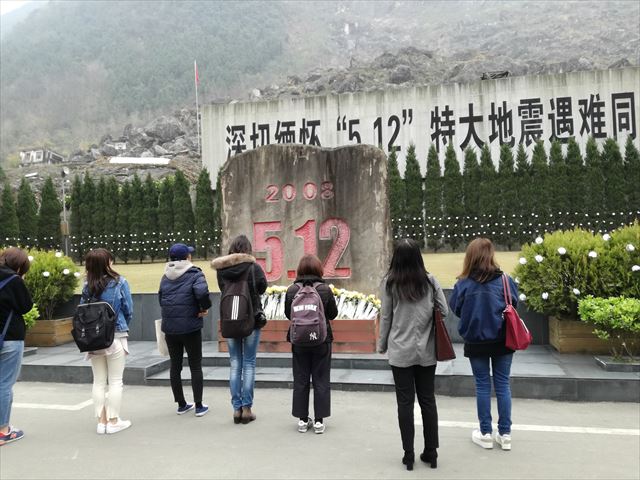
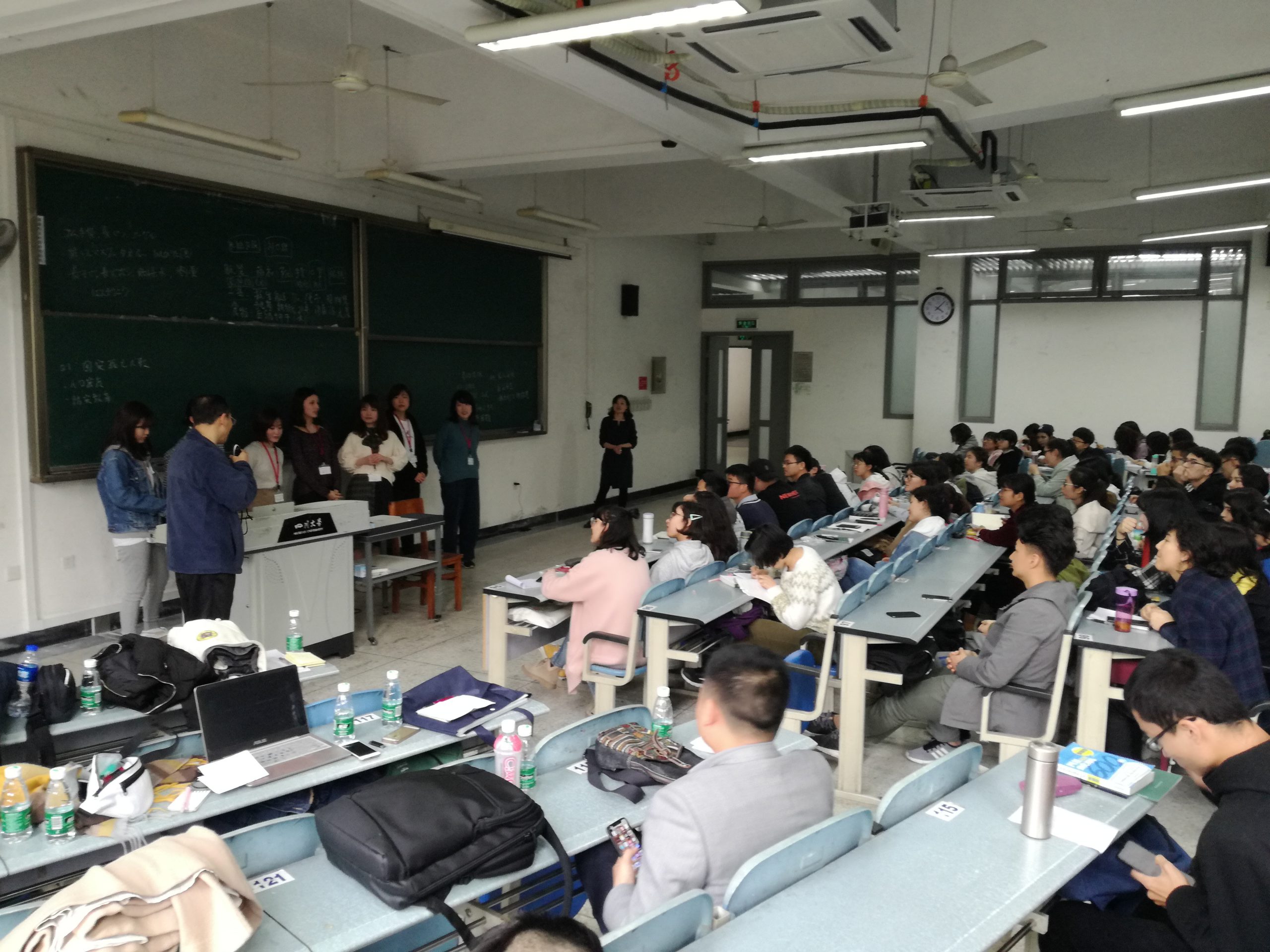
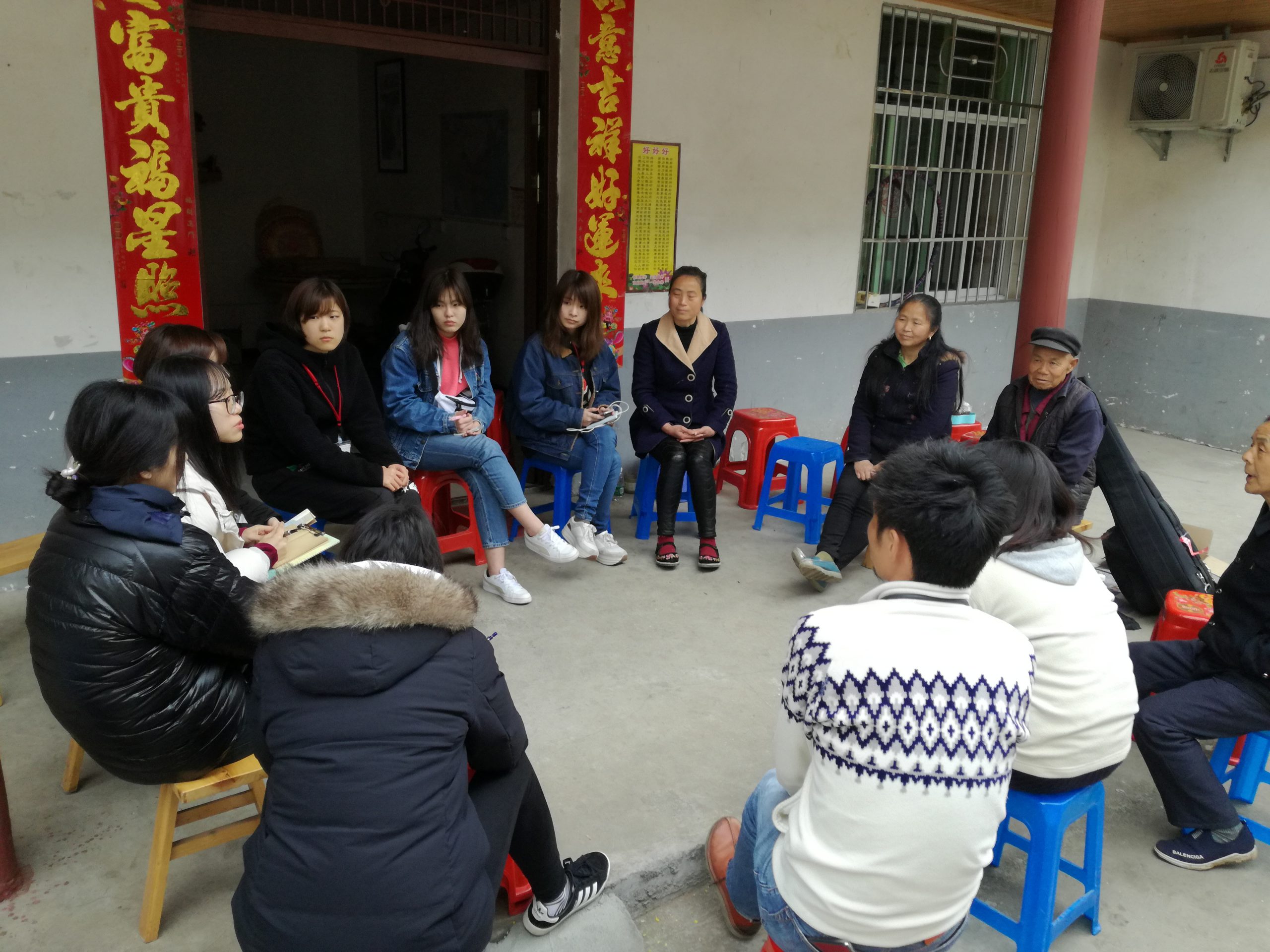
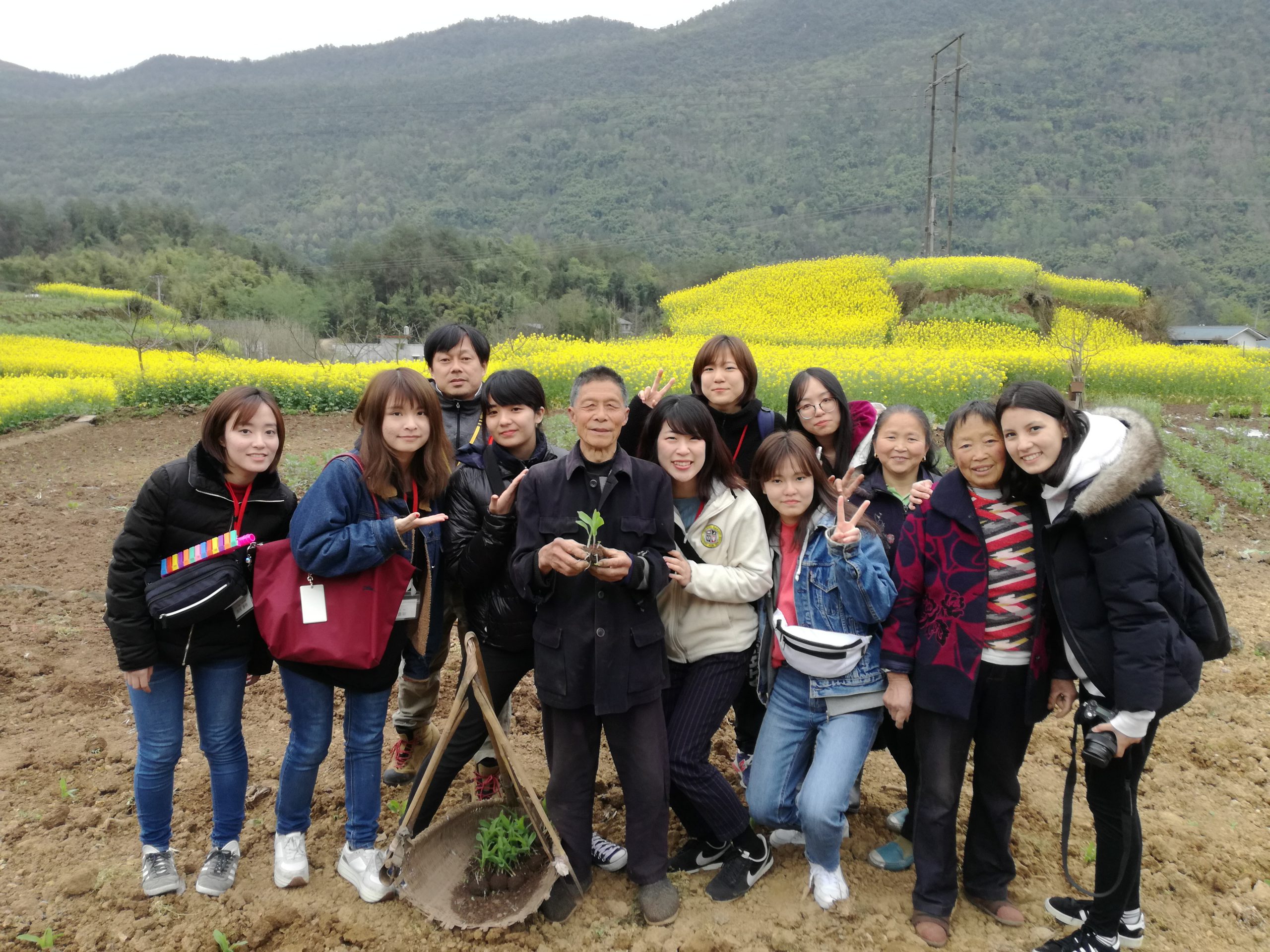
(6)Acceptance of China-Japan International Exchange Program for Disaster Mitigation and Disaster Prevention
The introduction of Japanese disaster education methods and materials at the Japan-China NGO and Volunteer Training Exchange Program led to an offer from a Sichuan NGO to learn about Japanese disaster education, and this project was realized in collaboration with the NGO Disaster Preparedness Center (Chengdu Shanghou Public Service Center) and Save the Children Beijing.
Period: June 20 (Tue.) – 25 (Sun.), 2017 (5 nights and 6 days)
Place: Kobe City, Hyogo Prefecture
Participants: 16 people, including officials from the city’s Education Bureau and principals and teachers from seven NGO project schools (Chengdu and Ya’an, Shanghai, and Beijing, Sichuan), 5 staff members from Save the Children Beijing (International Rescue Children’s Association), 2 NGO members from Sichuan Province. Total 23 people
Visiting places: Higashinada Elementary School, Maiko High School Environment and Disaster Prevention Department, Kobe City Board of Education, Disaster Reduction and Human Renovation Institution
Lecturer: Mr. Hirokazu Nagata (Representative of Plus Arts)
Yoichi Okada (Superintendent of Instruction, Kobe City Board of Education)
Noriko Kajiki (Kobe Women’s University)
Seiji Suwa (Disaster Prevention Advisor, Former Head of Environment and Disaster Prevention Department, Maiko High School)
Katsuya Yamori (Professor, Disaster Prevention Research Institute, Kyoto University)
Organized by: NGO Disaster Preparedness Center (Chengdu, Sichuan Province), represented by: Zhang Guoyuan (Representative)
Co-sponsored by: Save the Children Beijing (International Rescue Children’s Association)
Hosted by: CODE Citizens’ Center for Overseas Disaster Relief
Photo: Listening to “May it bring you happiness” at Higashinada Elementary School
